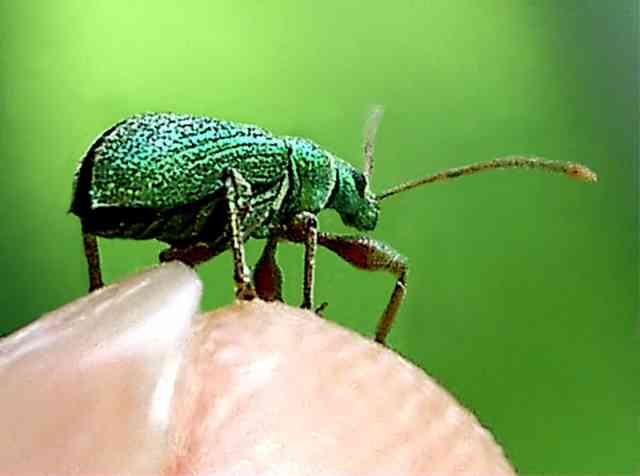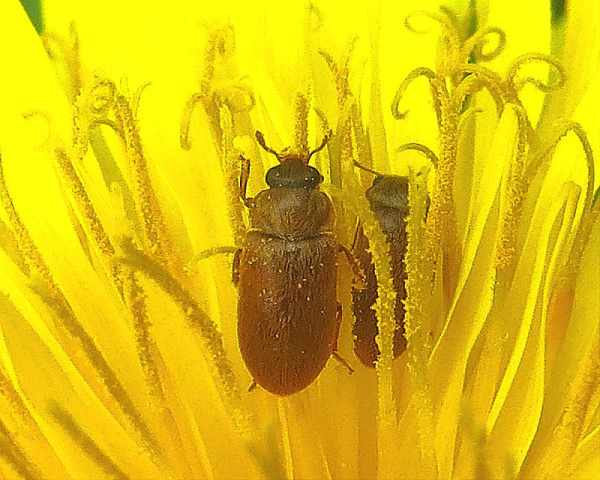The crane fly is an amazing creature close up, those huge eyes, the complexity of the sensory organs and the elephantine front of the thorax are never suspected when someone casually swats the life from one.
These are the parts responsible for the click beetles huge jumping ability which is equivalent to a human jumping about 60 feet vertically from a standstill. The beetle is upside down here, the prong is on the thorax, the grooved plate on the head. At a sign of danger the prong is inserted into the recess of the plate groove, the muscles tighten to tension the two together and then the beetle straightens again to part the two. With the pressure between the two, release when it comes is violent, the prong and plate tips striking the surface with force propelling the beetle into the air. When the beetle is inverted as here, escaping is the same, but it's the tips of the head and abdomen that strike the surface to propel it up.

Above, the head of a garden spider, its eight eyes just visible, four in a centre group, two to the right, and the two to the left just possible to see at the edge.

Above, a tiny leaf beetle crosses over the gap between a fingernail and a fingertip.

Right, an extreme close-up of a silverfish head and feelers.
How they were taken: Crane fly and Click beetle photos taken with an HP850 digital camera fitted with 10x and 7x Tiffen close up lenses and mounted on an old microscope stand. This set-up also took the spider and silverfish photos when hand held. A Canon SX260 digital camera used hand held for all the ant photos, nettle weevil and pollen beetles. A Pentax Optio S digital camera used hand held for the leaf beetle.
.

On the left a Pharoah ant, one of the smallest ants found in Britain and only 1.5 to 2 mm in length. An immigrant, these are mostly found in homes but can survive and nest outdoors in some parts of the south of England as here in a London fringe reserve.
Macro and Micro
All photos taken with a variety of average low cost consumer cameras and accessories

Left, a nettle weevil which feeds on the leaves of stinging nettles. The small scale of this photo can be judged from the size of the toothed serrations and sting spikes under the leaves of this nettle.

On the right, two minute pollen beetles have climbed the stamens at the central heart of a dandelion flower and are feasting on the abundant pollen.
.

Here on the left a swarm of tiny common black ants are attacking a green caterpillar and will cut it up to be carried back into their nest as food.
.

This three millimetre long yellow meadow ant will rarely come out into daylight, but is out in this case to repair recent damage to it's grassland nest top.

